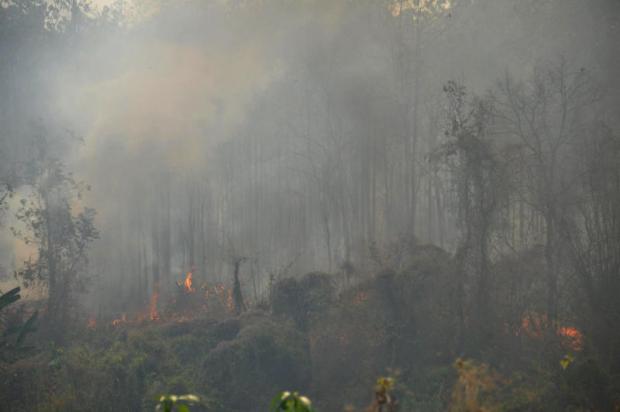
Chiang Mai has been enshrouded in a cloud of ultrafine PM2.5 dust at levels far exceeding safety standards, plunging the tourist province into a crisis.
The haze level yesterday escalated to such an extent that it prompted a Chinese Spring Airlines flight, which left Shanghai for Chiang Mai airport, to reroute to Suvarnabhumi airport, some 700 kilometres southward. It was the fourth flight that had to reroute this month because of poor visibility caused by the haze problem.
The toxic haze situation prompted Prime Minister Prayut Chan-o-cha to order the Natural Resources and Environment and Interior ministries to immediately find ways to solve the problem both in Chiang Mai and other nearby provinces.
The PM2.5 level recorded at the Pollution Control Department (PCD) was measured at exceeding 200 microgrammes per cubic metre (µg/m³) as of 8pm last night. Thailand's safety level is 50 µg/m³, while the World Health Organisation standard is 25 µg/m³. However, in the AirVisual, online app, the PM2.5 level peaked at 500 to 525 µg/m³ yesterday afternoon.
On the app, Chiang Mai again was listed as the city with the world's worst air quality at that time. The city has been rated as having the worst air quality on many days this month.
Chiang Mai University's Research Institute for Health Sciences warned people to wear masks at all times, even when indoors.
Institute head Kwanchai Supharatphinyo said that the very poor air quality yesterday represented "toxic dust at a critical level".
PCD director-general Pralong Damrongchai said the PM2.5 haze was the consequence of forest fires on a massive scale, open burning, and trans-boundary haze from neighbouring countries such as Myanmar and Laos.
He said air pollution in Chiang Mai and in the northern region was worse than previous years because El Nino had caused the air to be drier. Massive amounts of leaves and farm waste have also been building up over the past two years, serving as fuel that intensifies the fires.
When asked whether the PCD would declare Chiang Mai city as a "pollution control zone" as requested by residents, Mr Pralong said that would not solve the current haze situation.